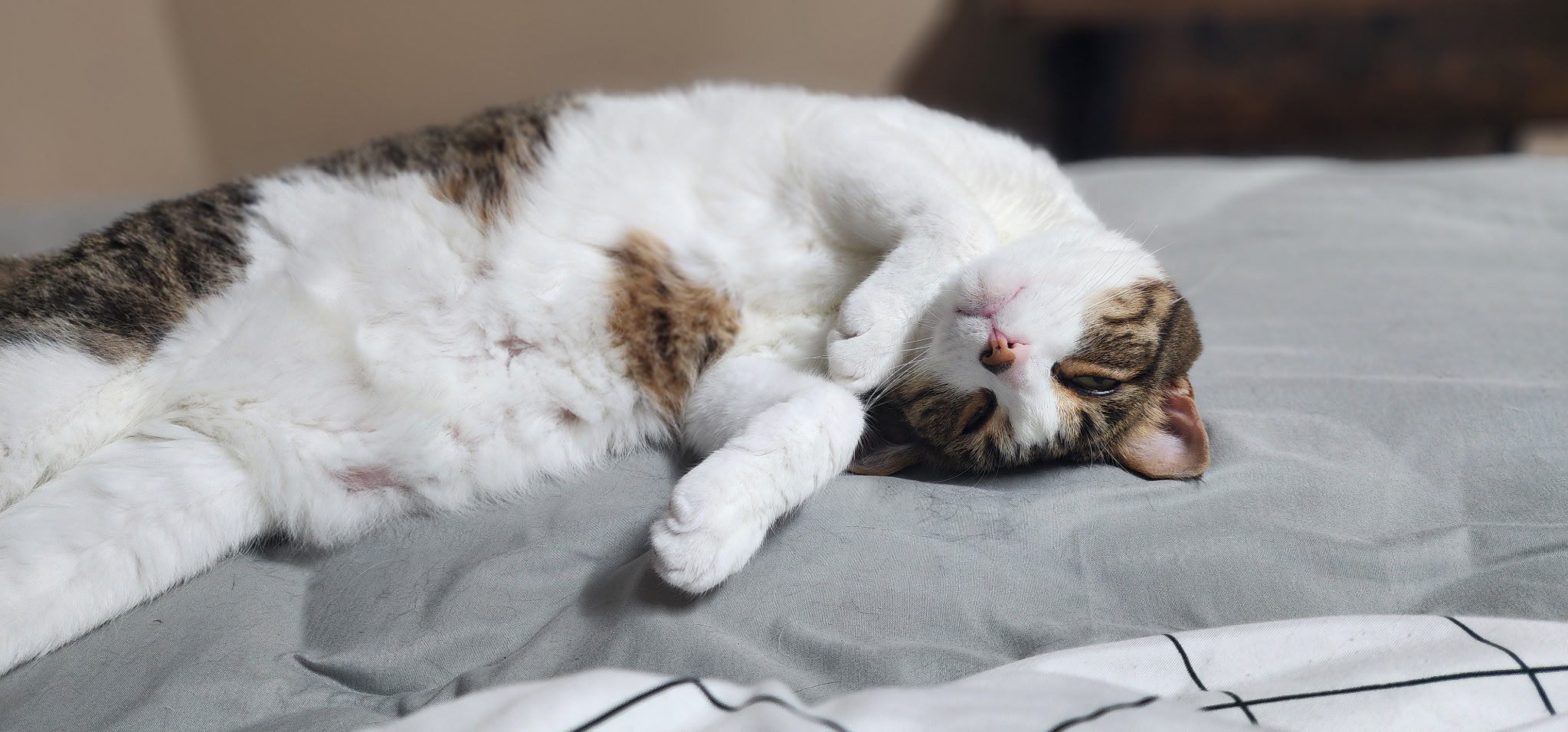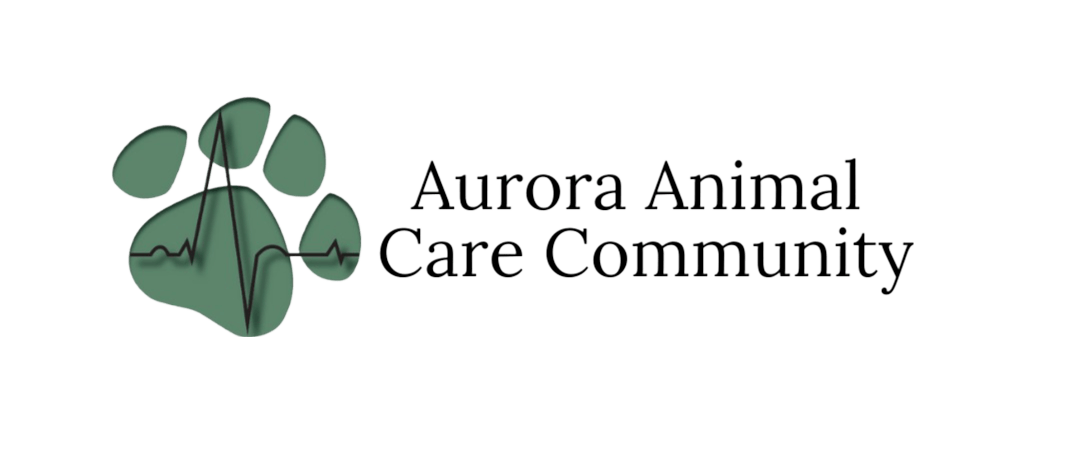By: Christine Koporc MSc and Jennifer Kartley DVM
 Core Principles of Cat Behavior
Core Principles of Cat Behavior
Cats are wonderful companions to have in the home. Utilizing their innate behaviors and instincts provides a way to form a better bond and appreciation of your furry friend. We know that cats are hardwired to hunt, stalk, and explore. Opportunities for these behaviors are often missing in indoor life. Without enrichment, the risks of stress-related illness, behavior problems, and obesity are all increased. Our comprehension of our favorite domesticated species of feline Felis catus is ever evolving. Let's take a peek at what things you can start doing.
Why Cat Enrichment Matters
Cat enrichment provides an avenue to exhibit the natural behaviors of a cat, allowing them to reach their intended quality of life. Cat behavior can sometimes be a puzzle to solve, as each individual will have different preferences and tendencies. But one thing stands true: increasing the diversity of enrichment while targeting core principles will promote positive behaviors.
Feeding, play, and their environment need to mimic a natural cat lifestyle to provide health and happiness in the home. When a cat's environment does not allow them to express their natural instincts and tendencies, they appear to act out. These can include generalized anxiety, aggression, excessive vocalization, self-mutilation, inappropriate urination, and destruction of furniture, among other attention-seeking or stress-related behaviors. In most cases, cat enrichment opportunities can prevent cats from going down the road of "behavior problems."
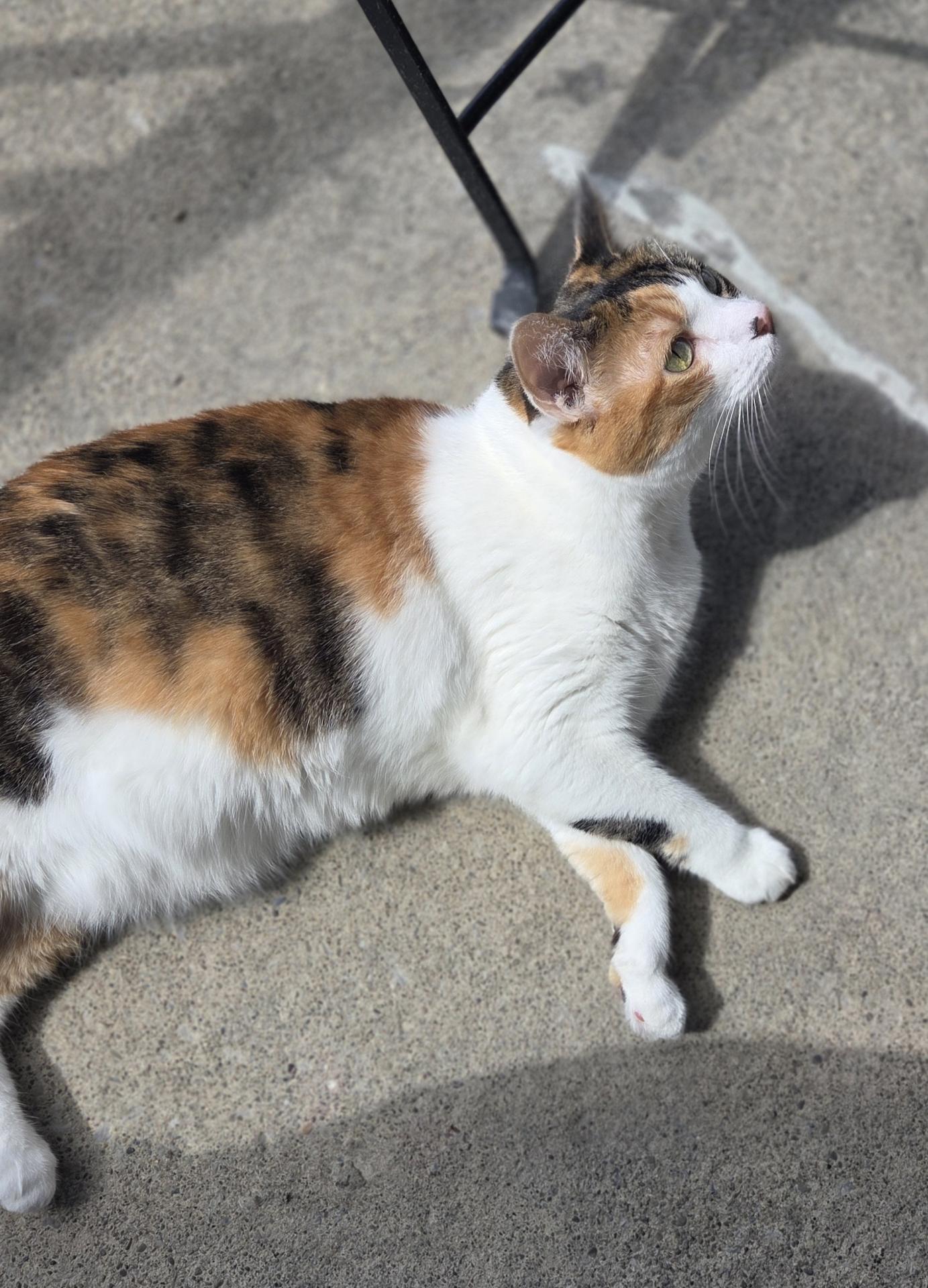 Respecting Natural Behaviors & Using Them for Better Cat Enrichment
Respecting Natural Behaviors & Using Them for Better Cat Enrichment
Cats are unique creatures that we attempt to domesticate. Not all are willing to comply. They are more introverted and don't have the people-pleasing tendencies that dogs generally have. Cats like stability and do not like unpredictability. Cats view unpredictable human actions, like yelling or spraying water when attempting to correct the pet's behavior, as a break in the human-animal bond. Please don't do this, it will decrease the trust your cat has in you as their owner.
Dr. Liz Bales, a veterinarian with a special interest in cat behavior and wellness, outlines some basic differences found in cats. Cats are solitary survivors; they feel safe alone while in a familiar place. They would normally hunt and eat 8-12 mice every day. Finally, they appreciate high-frequency, low-intensity interactions. Speaking of eating, cats would normally spend the majority of their waking hours hunting for food! No wonder indoor cats are predisposed to obesity. The magic bowl fills up, and they don't have to use energy to find it.
Cats are also innate climbers and like to find cozy places to hide! They absolutely need multiple options to climb and survey their kingdom. After all, we are just their caretakers! In a multi-cat household, it is imperative to have more options available to reduce inter-cat aggression regarding this resource category.
Pouncing For Their Portions: How Cats Should Eat
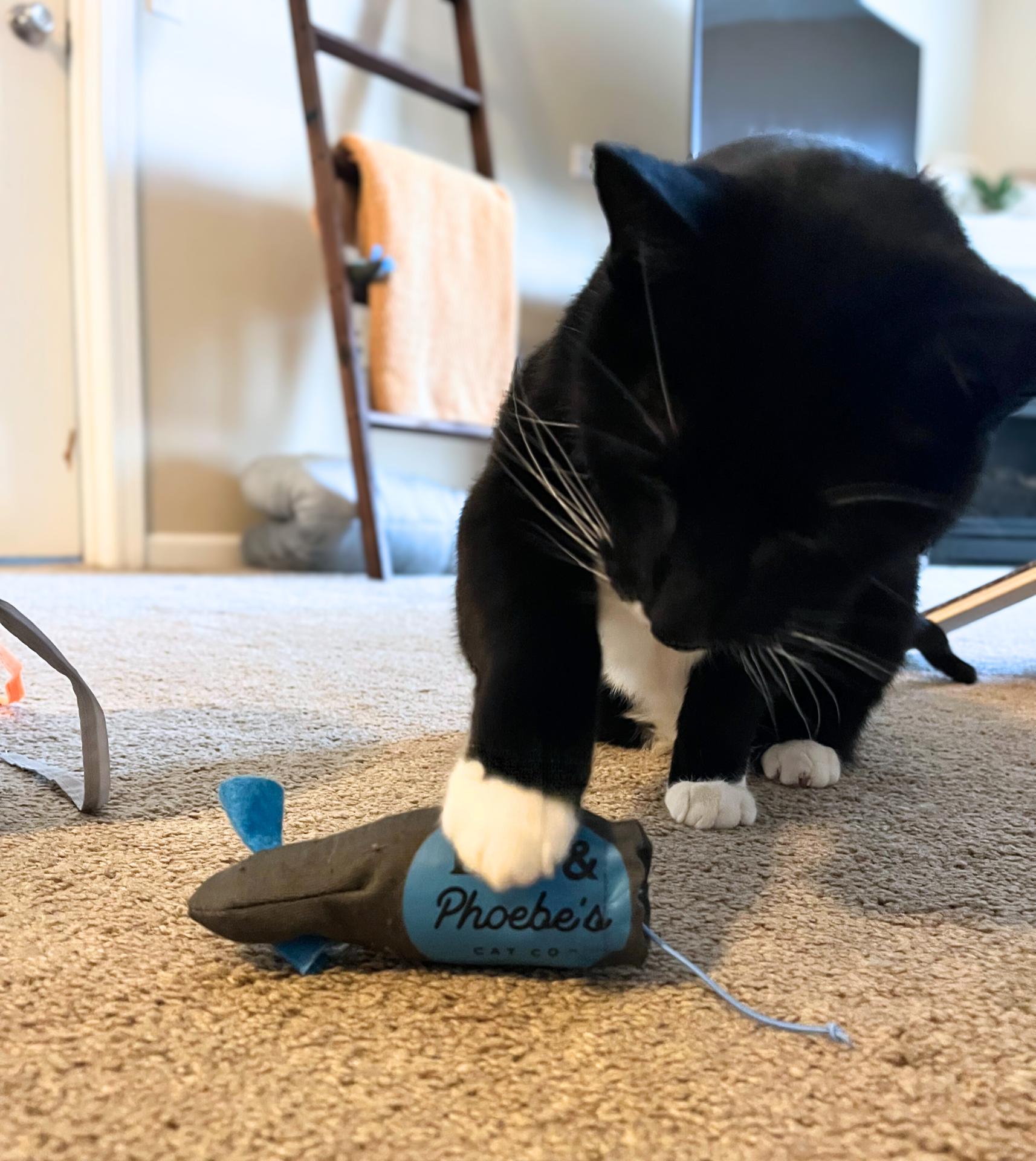 Your cat is a predator and an obligate carnivore. According to Liz Bales, DVM, cats normally spend around 80% of their waking hours hunting for food. Once they catch a prey item, they would then play with it. As humans, we find this revolting, but yes, cats like to play with their prey before eating it. Then they groom themselves and take a nap. This innate cycle "hunt -> catch -> play -> eat -> groom -> sleep" goes on repeat. Throughout this cycle, each step provides enrichment for them. Cats are built for these behaviors. When we just fill up the bowl, we eliminate HALF of their behavior outlets. No wonder our indoor cats may act inappropriately in our homes.
Your cat is a predator and an obligate carnivore. According to Liz Bales, DVM, cats normally spend around 80% of their waking hours hunting for food. Once they catch a prey item, they would then play with it. As humans, we find this revolting, but yes, cats like to play with their prey before eating it. Then they groom themselves and take a nap. This innate cycle "hunt -> catch -> play -> eat -> groom -> sleep" goes on repeat. Throughout this cycle, each step provides enrichment for them. Cats are built for these behaviors. When we just fill up the bowl, we eliminate HALF of their behavior outlets. No wonder our indoor cats may act inappropriately in our homes.
Ways you can fix this include implementing hunting feeder toys, such as the Doc and Phoebe Hunting Feeders for both wet and dry food. This provides interactive feeding and stimulates their problem-solving abilities. The dry feeder has an adjustable opening for different kibble sizes. The dry food mouse toy has a stuffed head and cloth body your cat can bite into for play, and is very light for them to carry around. The ability to carry their prey off to a secluded area they feel safe "consuming" it, is another instinct that can be supported through this enrichment item. Use this feeder like a game for your cat: fill them up with their portion of food and hide them in designated areas for their feeding time. Once experienced with the mouse feeders, an easy way to stimulate them further is to leave one of the mice you hide without any food in it. This mimics the "not every hunt is a successful one" for your cat!
Another fun and interactive way for your cat to eat is through puzzle toys. Feeding through puzzle toys develops problem solving and supports hunting instincts. Although different from individual mouse feeders, puzzle toys like the Cat Amazing Interactive Puzzle Feeder are multifaceted. With different sized holes and objects to move around, retrieving kibble pieces through this toy will become a favorite for your cat. Try these options, and your cat's enjoyment while eating will be enrichment for you, too!
High Places & Hidden Spaces: Enrichment for Cats From Floor to Ceiling
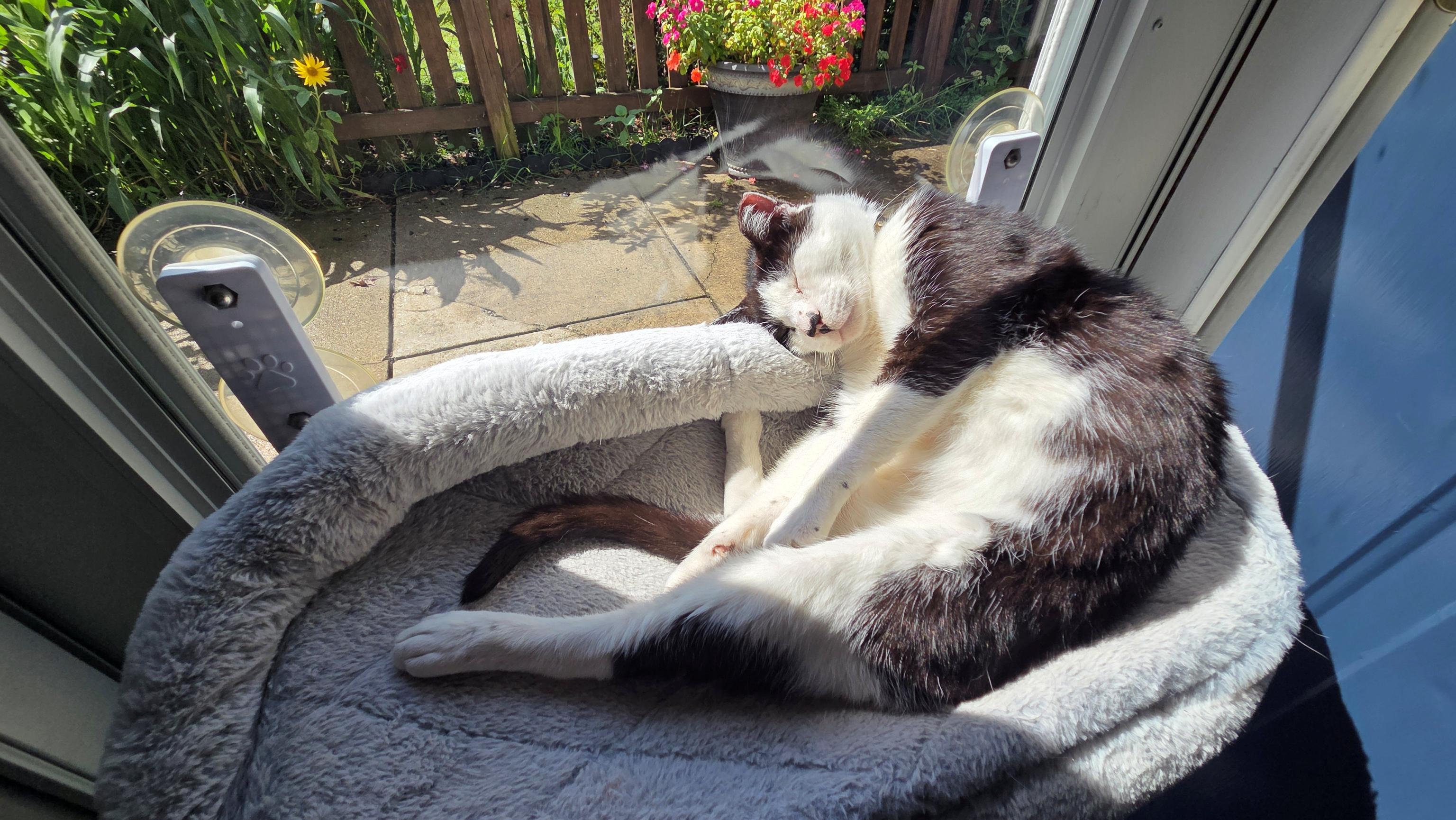 Providing an enriching home for your cat is essential to preventing stress/anxiety related disease and behavioral issues from arising. According to an article published by the Journal of Feline Medicine and Surgery, a cat's natural behavioral repertoire includes climbing and jumping. Cat brains are programmed to seek comfort and safety off the ground. Providing features such as cat trees, window perches, bookshelves, and other vertical landing options will help your cat have the opportunity to feel safe and secure while also encouraging more activity during the climb and descent. Floating shelves are not just for pretty pictures! Cats love having cozy spots to rest. Provide a variety of options for them so they can establish their preferences. Floor enrichment items include cat tunnels, cat caves/tents, or just a plain cardboard box for them to rest in. Pay attention to your cat's favorite option, but continue to challenge them with new items.
Providing an enriching home for your cat is essential to preventing stress/anxiety related disease and behavioral issues from arising. According to an article published by the Journal of Feline Medicine and Surgery, a cat's natural behavioral repertoire includes climbing and jumping. Cat brains are programmed to seek comfort and safety off the ground. Providing features such as cat trees, window perches, bookshelves, and other vertical landing options will help your cat have the opportunity to feel safe and secure while also encouraging more activity during the climb and descent. Floating shelves are not just for pretty pictures! Cats love having cozy spots to rest. Provide a variety of options for them so they can establish their preferences. Floor enrichment items include cat tunnels, cat caves/tents, or just a plain cardboard box for them to rest in. Pay attention to your cat's favorite option, but continue to challenge them with new items.
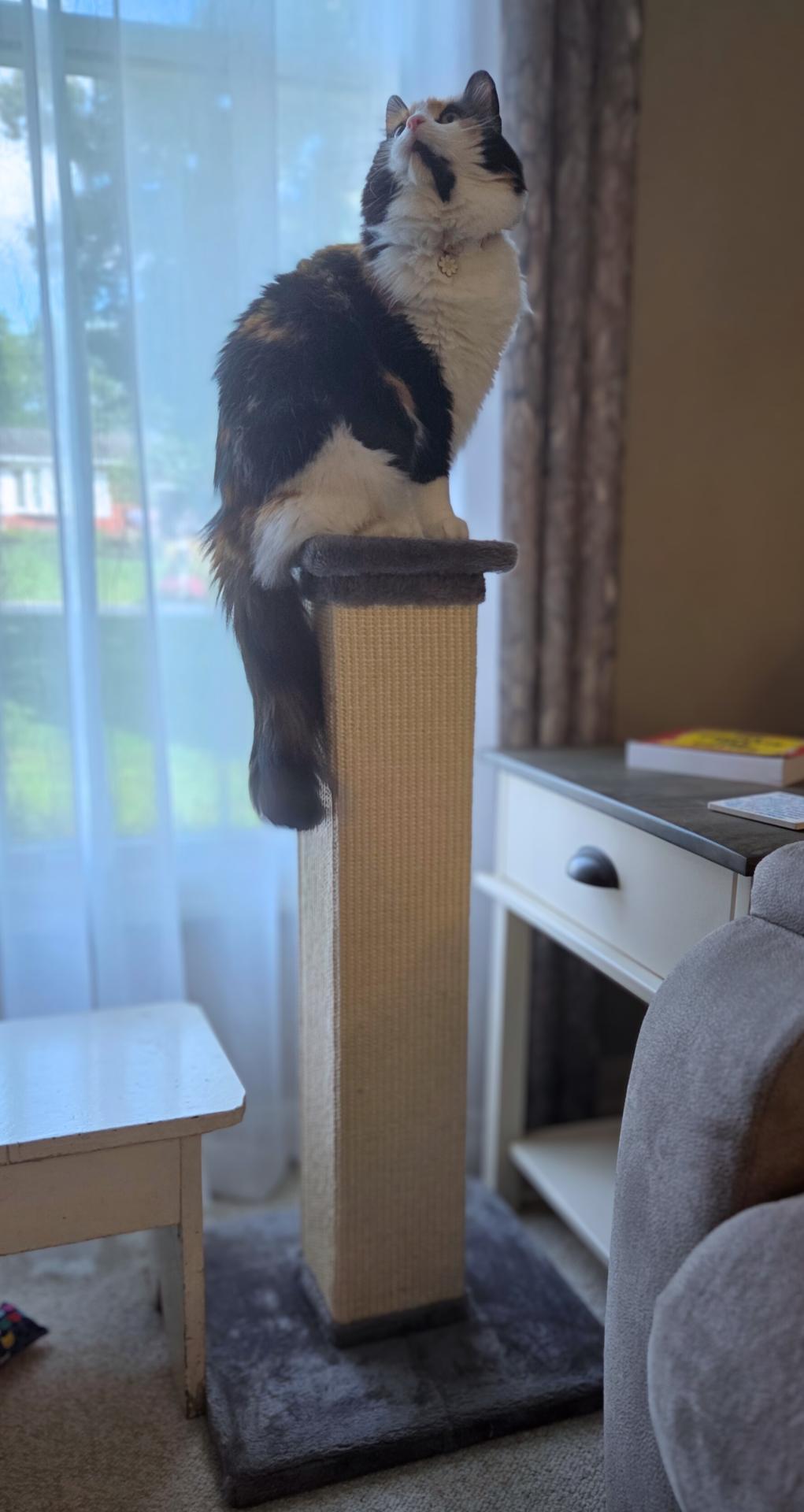 Not Just Scratching, It's a Lifestyle
Not Just Scratching, It's a Lifestyle
Humans view scratching as a destructive behavior. In reality, it is an innate behavior intended for expression and a way to mark their territory both by scent and visual markers (Humane World for Animals). Scratching posts and surfaces are a very important enrichment category for your cat. Every cat has different preferences, so providing a variety for your feline friend will be best to help them explore what they enjoy.
Having vertical scratching posts that are high enough to allow your cat to get a full stretch is a must. This will allow them to express their natural behavior on an appropriate surface and not your dining room chairs. Horizontal scratching surfaces of different substrates, like cloth mats and cardboard, provide another avenue for enrichment for cats with those preferences. Set your cat up for success by providing these valuable outlets.
"Purrr-suit" of Playtime & Alone Time
In the eyes of your cat, daily play time is non-negotiable. There are so many toys available for your feline friends, but making sure they provide enrichment while being a safe option is imperative. Different categories of cat toys will do different things. Solitary play items like electronic wand toys or bird toys are helpful for the busy pet parent to fit in enrichment and exercise for your cat.
Another way to tie in enrichment is by combining a window perch and an outdoor wildlife feeder. You essentially create a real-life "cat TV" for your feline friend, but this type is mentally enriching for them! Many cats love watching the birds and squirrels bounding outside. Interactive toys, such as fetching or wand options, allow you to participate. This type of play reinforces the bond you have with your cat. Pro Tips: Make sure to note the type of play your cat enjoys! Some cats like to stalk and pounce as part of their play which stems from their natural hunting instincts. Keep in mind, rotating your cat's toys will prevent them from becoming mundane and rekindle their excitement!
Leash Walking: A Natural Extension of Cat Enrichment
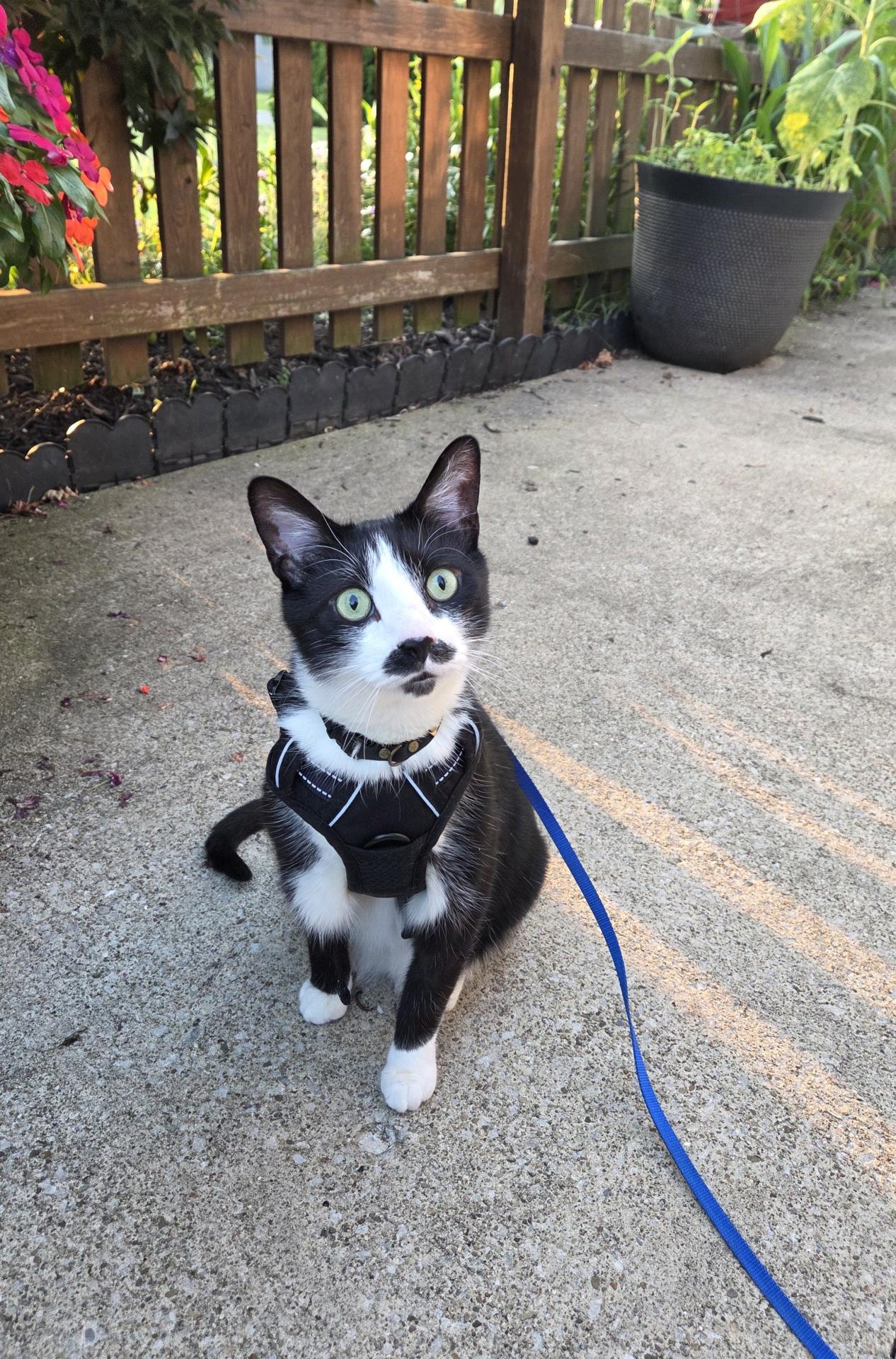 Yes, you can leash train a cat! Leash walking your cat outside allows them to experience the outdoors in a safe way. Outdoor cats have shorter lifespans because they are exposed to dangers not found indoors. This multimodal form of enrichment involves olfactory (scent), visual, and auditory stimulation, even if only in your backyard. Now that sounds like a lot, but your cat is literally built to handle this. Allowing safe outdoor exploration of sights, sounds, and scents encourages exercise, reduces obesity, and provides irreplaceable mental stimulation. Expanding your cat's worldview is great because it can build their confidence and reduce stressors, especially when introduced properly.
Yes, you can leash train a cat! Leash walking your cat outside allows them to experience the outdoors in a safe way. Outdoor cats have shorter lifespans because they are exposed to dangers not found indoors. This multimodal form of enrichment involves olfactory (scent), visual, and auditory stimulation, even if only in your backyard. Now that sounds like a lot, but your cat is literally built to handle this. Allowing safe outdoor exploration of sights, sounds, and scents encourages exercise, reduces obesity, and provides irreplaceable mental stimulation. Expanding your cat's worldview is great because it can build their confidence and reduce stressors, especially when introduced properly.
Whether young or old, using positive reinforcement, supporting your cat's pace, and correct introduction, your cat can be begging to go outside for walks soon enough!
Tips for Cat Leash Walking Success:
- Use a well-fitting cat-specific harness
- Start indoors before going outside. Some pet parents will observe unique behaviors when their cat has a harness on for the first time. Try to distract them from the harness and give them treats or start to play with them. Make them think "harness = positive experiences and fun."
- Most owners give up way too soon - your cat doesn't realize just yet how much fun they will have! Don't push your cat too much but encourage and reward them every step of the way.
- Keep walks short, quiet, and cat led.
- Never force; let your cat decide when and how far to go. Setting boundaries is okay, too!
- Bring Churu or their favorite treats on the walk. Reward them for being brave, curious, and having fun outside!
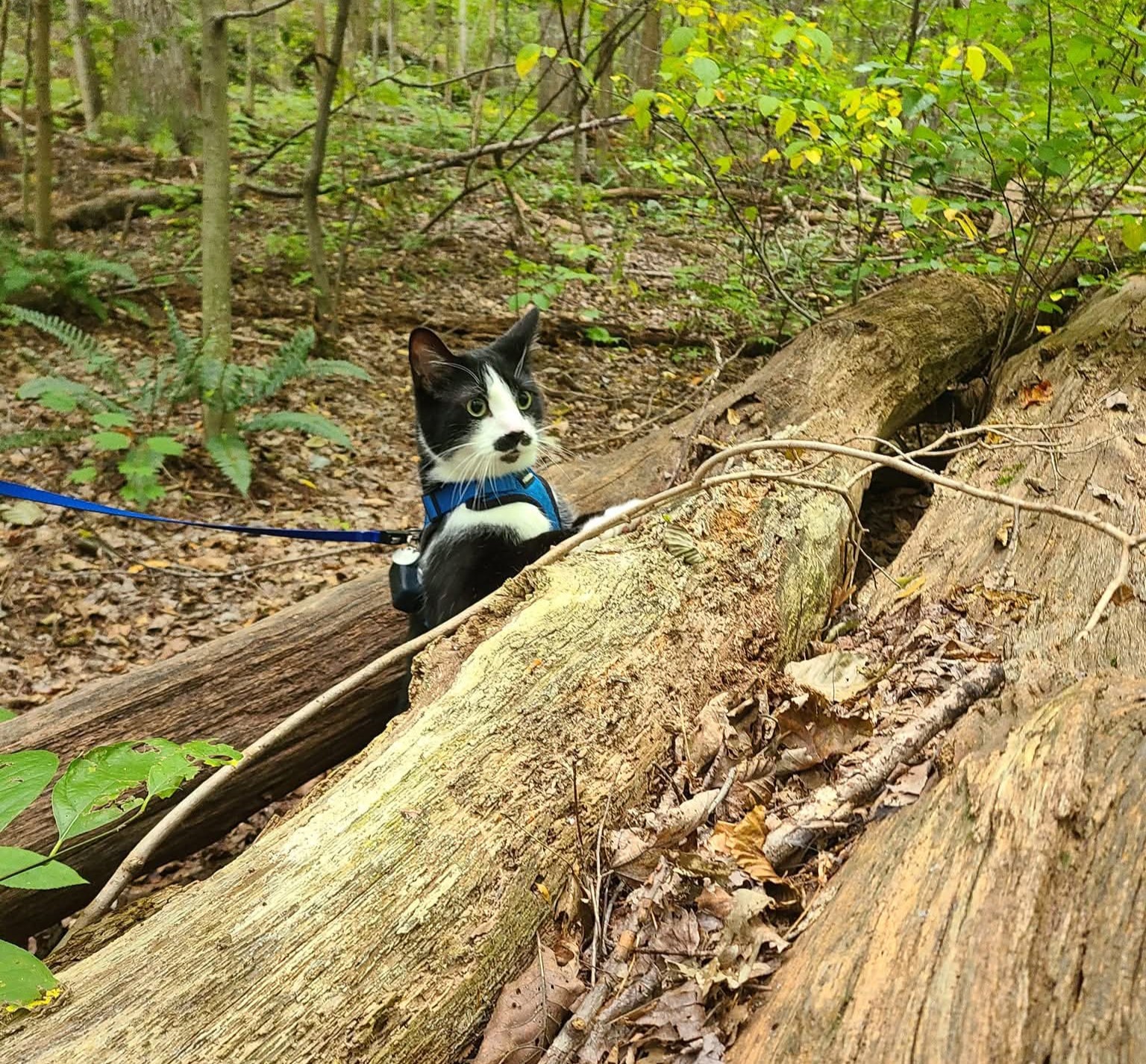 Relaxing on the Catio
Relaxing on the Catio
If there are obstacles preventing you from leash walking your cat, a catio is a great alternative. These can be purchased or custom-made and range in sizes and configurations. This will allow your cat some benefits of leash walking but an provide extra safety. Independent exploration of the catio can be coupled with previously discussed enrichment options. You can jazz up this space with cat towers, perches, and plenty of toys!
Honoring You Cat's Natural Instincts
For thousands of years, we have attempted to domesticate cats, and we need to stop fighting their natural behaviors. They make amazing pets as long as you respect their instincts and give them the enrichment they need to thrive and express themselves.
A cat needs to be moving, interacting with the environment, and using their brain to solve problems or puzzles. From hunt based feeding to leash walking, every strategy you implement will better the health and wellness of your feline friend. Start small, let your cat set the pace, and watch their confidence and well-being blossom. Think out of the box, you will be amazed by the impact this has on not only your cat, but your own lifestyle.
